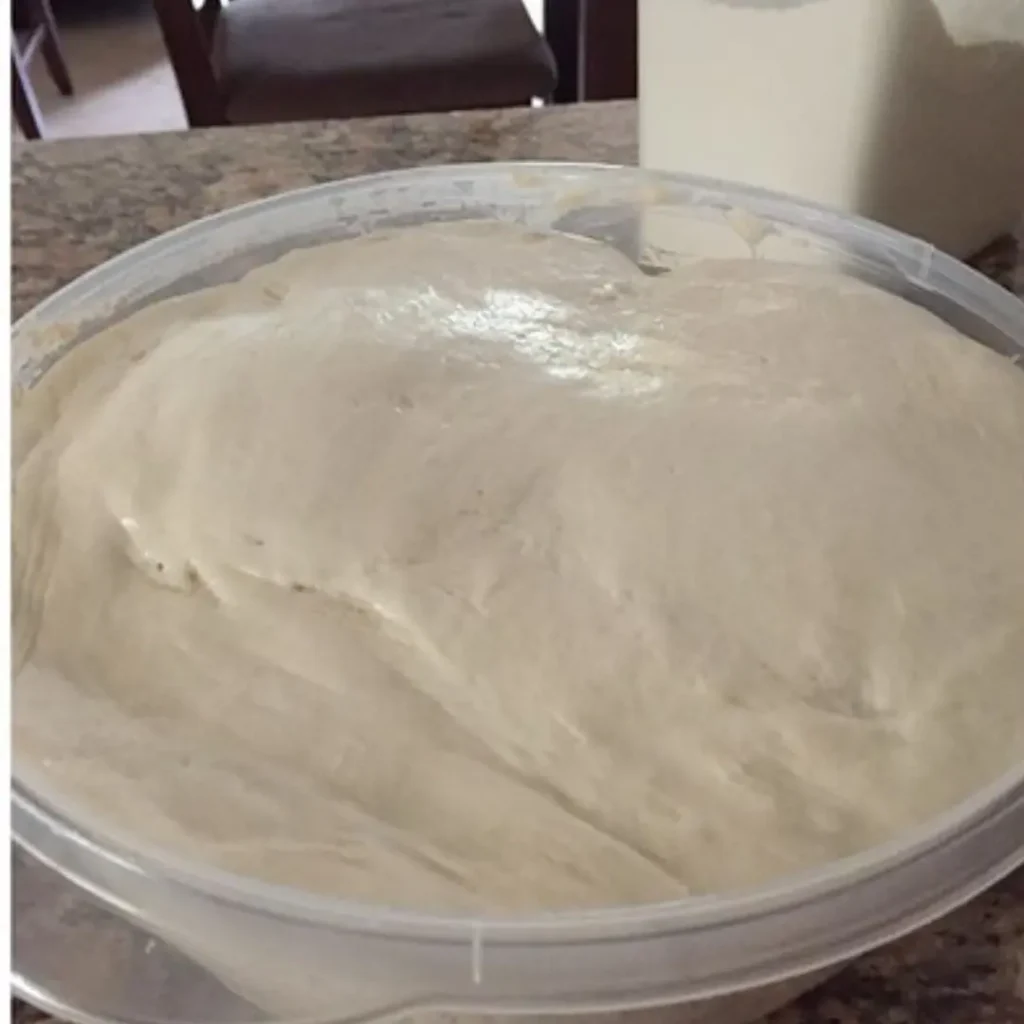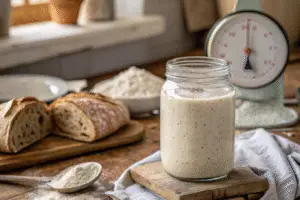Can you freeze sourdough starter? Absolutely—and it’s one of the best ways to preserve your starter when life gets busy. Whether you’re planning a vacation, cutting back on baking, or simply want a backup, freezing lets you hit pause without losing all your hard work.
This simple yet powerful kitchen trick connects deeply with my own culinary journey. Raised in a California kitchen where recipes were as emotional as they were flavorful, I learned early on the importance of preserving both food and memories. Now, as I cook with my daughters and share our stories through AMGRoyal, freezing sourdough starter is just one more way we keep tradition alive while making space for modern life.
New to sourdough baking? Before you freeze, make sure your starter is strong and active. Follow our step-by-step guide on how to make sourdough starter from scratch—it’s beginner-friendly and full of helpful tips.
Can You Freeze Sourdough Starter? A Lifesaver for Home Bakers
Can you freeze sourdough starter? Absolutely—and this method is a true game changer for bakers who want flexibility. When life gets hectic, freezing your starter allows you to hit pause without worrying about daily feedings or waste.
Why Freeze Your Sourdough Starter?
- Convenience for Busy Bakers: Freezing allows you to pause your sourdough baking routine during busy periods without discarding your starter.
- Long-Term Preservation: Ideal for extended breaks, vacations, or when you don’t plan to bake for several weeks or months.
- Waste Reduction: Minimizes the need for regular feedings, saving flour and reducing discard.
Can You Freeze Sourdough Starter Without Killing It?
Yes, you can freeze sourdough starter without killing it—if you do it correctly. The key is to freeze it when it’s strong, active, and recently fed. This helps protect the natural yeast and bacteria that give your sourdough its signature tang and rise. Once frozen, the starter goes into a dormant state but remains very much alive, ready to bounce back after thawing and a few feedings.
Can You Freeze Sourdough Starter and Use It for Bread Later?
Once revived, your thawed starter can be used for all your favorite bakes—including discard recipes! Don’t miss our moist and flavorful sourdough discard banana muffins—they’re a family favorite and a delicious way to use up every last bit.

When Should You Consider Freezing Your Starter?
- Extended Absence: Planning a vacation or a break from baking? Freezing keeps your starter safe until you’re ready to bake again.
- Backup Creation: Maintain a frozen backup in case your active starter encounters issues.
- Seasonal Baking: If you bake seasonally, freezing ensures your starter is ready when you are.
How to Properly Freeze Your Sourdough Starter
- Feed Your Starter: Refresh your starter with a 1:2:2 ratio (starter:flour:water) and let it become active and bubbly.
- Portion the Starter: Divide the active starter into manageable portions (e.g., 50g) using silicone ice cube trays or muffin cups.
- Freeze: Place the trays in the freezer until the starter is fully frozen (approximately 4-6 hours).
- Store: Transfer the frozen portions into labeled, airtight freezer bags or containers. Remove as much air as possible to prevent freezer burn.
Thawing and Reviving Your Frozen Starter
- Thaw: Place a frozen portion in a clean jar and let it thaw at room temperature for about 12 hours.
- First Feeding: Add equal parts flour and lukewarm water to the thawed starter (e.g., 50g each). Mix well.
- Fermentation: Allow the mixture to sit at room temperature for 12 hours.
- Subsequent Feedings: Discard all but 50g of the starter and feed it again with 50g flour and 50g water. Repeat this process every 12 hours until the starter is active and doubling in size.
Tips for Successful Freezing and Revival
- Use a Mature Starter: Ensure your starter is well-established (at least a few months old) before freezing.
- Maintain Cleanliness: Use clean utensils and containers to prevent contamination.
- Label Clearly: Include the date of freezing on your storage containers for reference.
- Avoid Refreezing: Once thawed and revived, avoid refreezing the starter to maintain its integrity.
Alternative: Drying Your Sourdough Starter
For even longer storage, consider drying your starter:
- Spread Active Starter: Thinly spread your active starter on parchment paper.
- Dry: Allow it to air dry completely at room temperature.
- Store: Break the dried starter into flakes and store in an airtight container in a cool, dry place.
To revive, soak the flakes in lukewarm water, feed with flour, and follow the regular feeding schedule until active.
Conclusion
Freezing your sourdough starter is a practical solution for preserving its vitality during periods when regular maintenance isn’t feasible. By following proper freezing and revival techniques, you can ensure your starter remains a reliable companion in your baking adventures.
For more delicious recipes and cooking inspiration, follow me on Facebook and Pinterest!
FAQs :
How long can I freeze my sourdough starter?
Properly stored, a sourdough starter can be frozen for up to 12 months. For best results, use it within this timeframe.
Can I freeze sourdough discard?
Yes, sourdough discard can be frozen and later used in recipes like pancakes or muffins. However, it’s less suitable for reviving into an active starter.
Is it better to freeze or refrigerate my starter?
Refrigeration is suitable for short-term storage (up to a month) with weekly feedings. Freezing is ideal for long-term storage without the need for regular maintenance.











5 thoughts on “Can You Freeze Sourdough Starter? Yes—Here’s How to Do It Right”
Comments are closed.